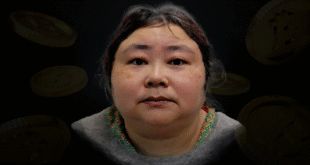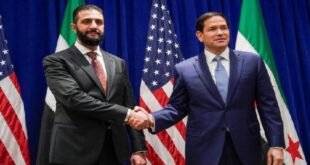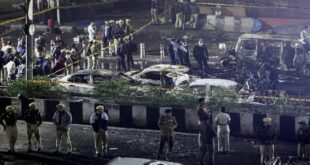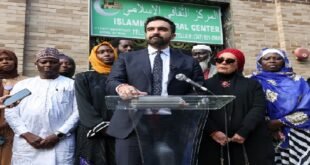10-10-2025
DAMASCUS: Syria recently held complex parliamentary elections that are designed to give the country a new parliament. These elections were expected to be held over the last months as the country transitions to a new system of government after fifty years of dictatorship that ended in December 2024.
 In the wake of the fall of the Assad regime, Syria appointed a new transition government. This took shape between January and March 2025. The new government is led by Ahmed al-Shara’a, the former head of the group Hayat Tahrir al-Sham. The new government has a cabinet and ministries.
In the wake of the fall of the Assad regime, Syria appointed a new transition government. This took shape between January and March 2025. The new government is led by Ahmed al-Shara’a, the former head of the group Hayat Tahrir al-Sham. The new government has a cabinet and ministries.
The most powerful ministries, such as defense, foreign affairs, and interior, are led by HTS men. However, around half the ministers are independents, and some are minorities such as Kurds, Druze, Alawites, or women.
Syria held its first parliamentary elections on Sunday since the fall of the Assad regime. And while it’s an important step for Damascus, there are still many hurdles to becoming a fully-fledged democratic state.
The country’s transitional government does not control all of Syria, making it difficult to hold elections in some areas. This leaves parts of the Druze region of Sweida and the Kurdish areas of eastern Syria without elected representatives.
“A later date will be scheduled for voting in certain areas of the Raqqa and Hasakah provinces (Ma’adan, Ras al-Ayn, and Tell Abyad),” SANA reported. “Seats in the remaining districts of these provinces, as well as all districts in the Sweida province, will remain vacant until conditions allow.” Also, the election process is complex.
“There will be no direct vote for the People’s Assembly, which will be responsible for legislation during a transitional period. Instead, ‘electoral colleges’ will select representatives for two-thirds of the 210 seats. Interim President Ahmed al-Sharaa will appoint the rest,” media reported.
Syria’s state media detailed the electoral process. “The voting process, which will mark the formation of the first Syrian People’s Assembly since the fall of the defunct regime, will take place at designated electoral district centers across most provinces, as set by the Higher Committee for Parliamentary Elections.”
 ‘Eligible voters are members of the accredited electoral bodies’
‘Eligible voters are members of the accredited electoral bodies’
Polls opened at 9 a.m., and, for the most part, closed on time around 5 p.m., with complete results expected by late Sunday night.
“Eligible voters are members of the accredited electoral bodies,” SANA said. “After voting concludes, the ballot boxes will be opened publicly in the presence of the media, and the counting of votes will begin. Preliminary results will be announced immediately through national media outlets.”
Per SANA, “In the lead-up to the elections, extensive preparations took place across the provinces. The nomination period for membership in the People’s Assembly closed on September 28, covering 50 electoral districts nationwide, with a total of 1,578 candidates, of whom 14% were women.”
One of the candidates highlighted by Syrian media was “Syrian American Rabbi Henry Hamra,” who, according to SANA, “announced his candidacy for the People’s Council representing Damascus, becoming the first Jewish candidate since 1967.
“His platform focuses on supporting reconstruction, economic development, and efforts to lift the Caesar Act sanctions,” it reported. “Hamra emphasized his belief in a united and tolerant Syria, and pledged to work with the Syrian community in the US to achieve these goals.”
The SDF operates in eastern Syria and has been fighting ISIS for 10 years. It is made up of Kurds, Arabs, and Christians. The SDF is supposed to integrate into the Damascus-backed new Syrian military. However, this integration has not happened yet. (Int’l Monitoring Desk)
 Pressmediaofindia
Pressmediaofindia




